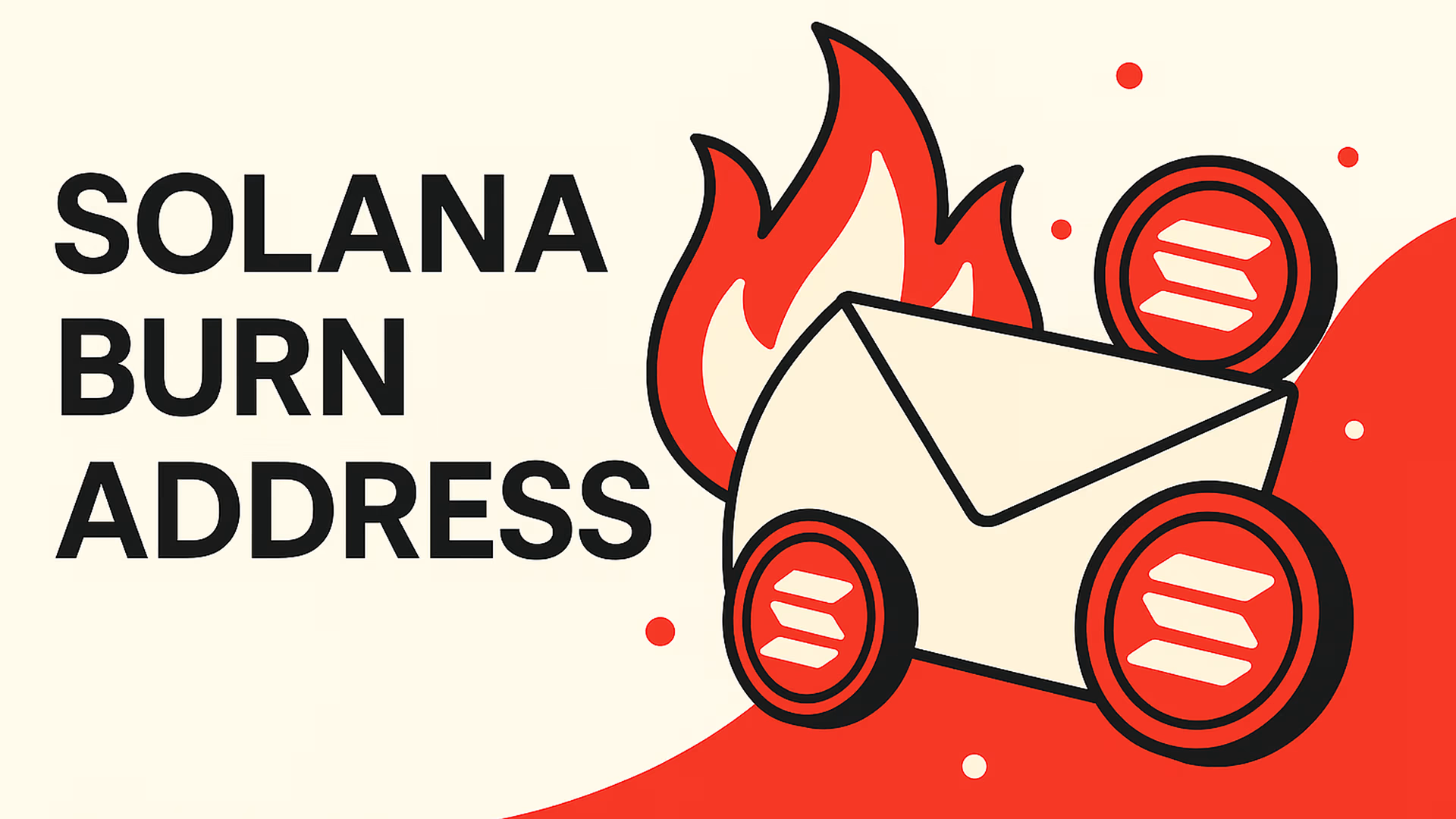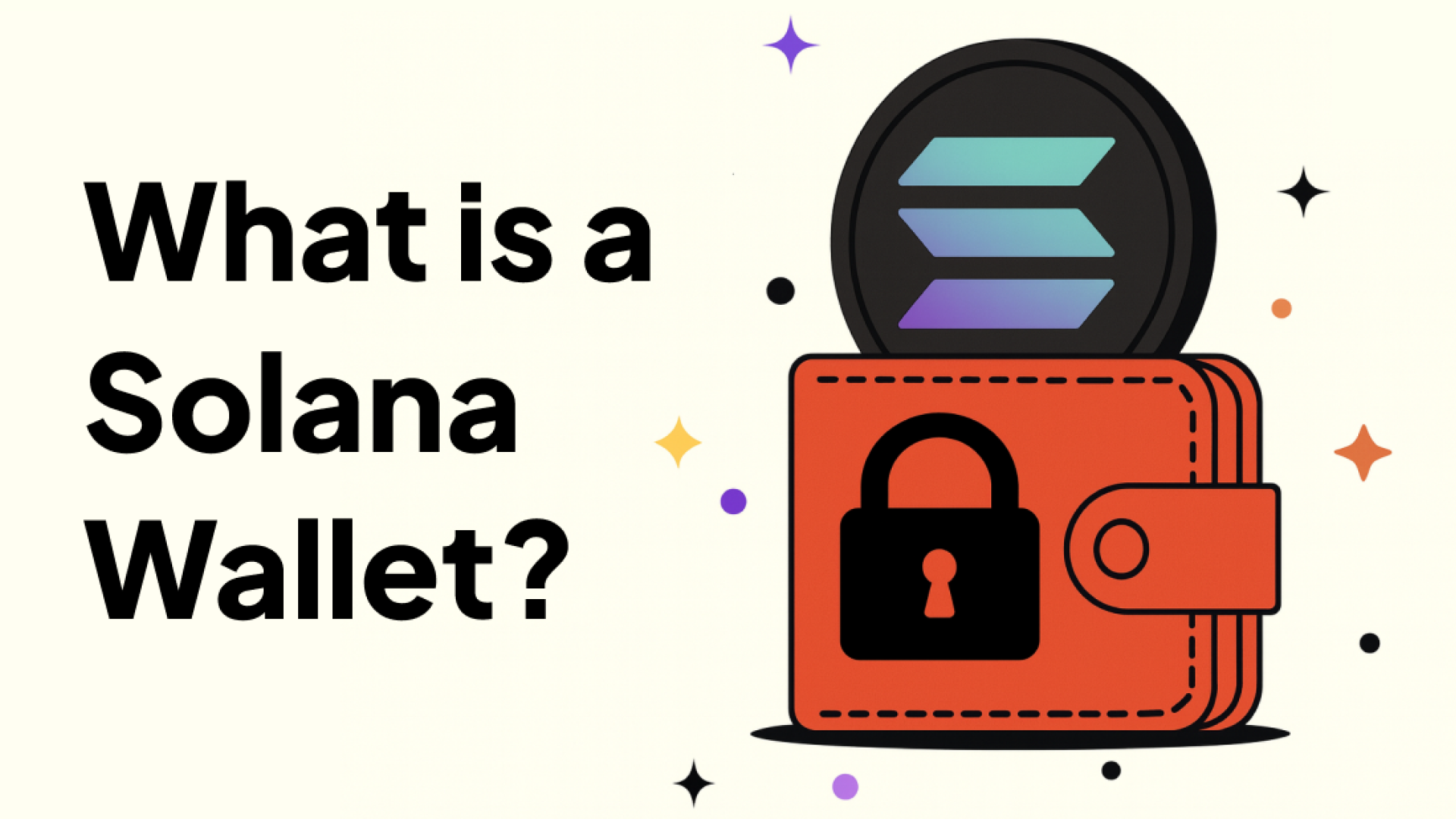Solana Burn Address: Complete Guide to Token Burning on Solana
Key Takeaways
Native Burn Mechanism: Solana uses protocol-level burn instructions instead of traditional "burn addresses," providing direct supply reduction with transparent on-chain verification and minimal fees.
Token Burning Methods: Multiple approaches exist including SPL Token Program burns, the incinerator address (1nc1nerator11111111111111111111111111111111), and third-party burning platforms with varying cost and complexity trade-offs.
Economic Impact: Token burning creates deflationary pressure through permanent supply reduction, with successful examples like BONK's 1.69 trillion token burn generating immediate market response.
Fee Structure: Solana burns 50% of all transaction fees automatically, creating a built-in deflationary mechanism that has permanently removed over 11 million SOL from circulation since network launch.
Introduction
Token burning has become a cornerstone of modern tokenomics, offering projects a mechanism to create scarcity, demonstrate commitment, and align incentives with holders. While many blockchains rely on sending tokens to "dead addresses" that no one controls, Solana takes a fundamentally different approach through native protocol-level burning that provides superior transparency and efficiency.
The question "Does Solana have a burn address?" reveals common confusion in the ecosystem. Unlike Ethereum's 0x000...dead pattern, Solana implements true token destruction through its SPL Token Program, ensuring burned tokens are permanently removed from circulation rather than simply made inaccessible. This guide explores how Solana's burning mechanisms work, when to use different approaches, and practical implementation strategies.
What is Token Burning?
Token burning is the permanent removal of cryptocurrency tokens from circulation, effectively reducing the total supply forever. In traditional finance, this concept parallels companies buying back and retiring their own shares, creating scarcity that theoretically increases the value of remaining tokens.
The blockchain world implements burning through various mechanisms:
Dead Address Method - Tokens sent to addresses with no known private keys (common on Ethereum) Protocol-Level Burning - Native blockchain instructions that decrement supply counters directly Smart Contract Burning - Programmatic destruction through contract logic
Solana's approach emphasizes the protocol-level method, providing mathematical certainty that burned tokens cannot be recovered while maintaining complete transparency through on-chain verification.
What is Solana's Burn Address?
Solana doesn't have a traditional "burn address" in the Ethereum sense. Instead, it offers multiple burning mechanisms depending on your specific needs and technical requirements.
The Incinerator Address
For users seeking an Ethereum-like experience, Solana provides the incinerator address: 1nc1nerator11111111111111111111111111111111
This address serves as Solana's equivalent to Ethereum's dead addresses, but with an important distinction: it's a recognizable, purpose-built address specifically designed for token disposal rather than a random unreachable address.
Native SPL Token Burning
The technically superior approach uses Solana's SPL Token Program burn instruction, which:
- Directly decrements the token's total supply counter
- Generates verifiable on-chain events
- Costs minimal transaction fees (~0.000005 SOL)
- Provides atomic transaction guarantees
How to Burn Tokens on Solana
There are three simple ways to burn tokens on Solana, depending on your needs and technical comfort level:
Method 1: Use the Built-in Burn Feature (Best Option)
This is Solana's official way to burn tokens. When you use this method, the tokens are completely destroyed and the total supply actually decreases.
What happens:
- Your tokens are permanently destroyed
- The total token supply goes down
- Costs almost nothing (less than $0.01)
- Most accurate and transparent method
Best for: Anyone who wants to properly burn tokens and reduce the total supply
Method 2: Send to the Incinerator Address (Easiest Option)
This is like throwing tokens into a digital trash can. You send them to a special address that nobody controls.
The address: 1nc1nerator11111111111111111111111111111111
What happens:
- Tokens become impossible to access
- Easy to do from any Solana wallet
- Total supply number doesn't change (but tokens are still gone)
- Works just like sending to any other Solana wallet
Best for: Beginners who want a simple solution and don't mind that the supply counter stays the same
Method 3: Use a Burning Website (Most User-Friendly)
Several websites make token burning easy with simple interfaces:
Popular options:
- Sol Incinerator - Simple and clean interface
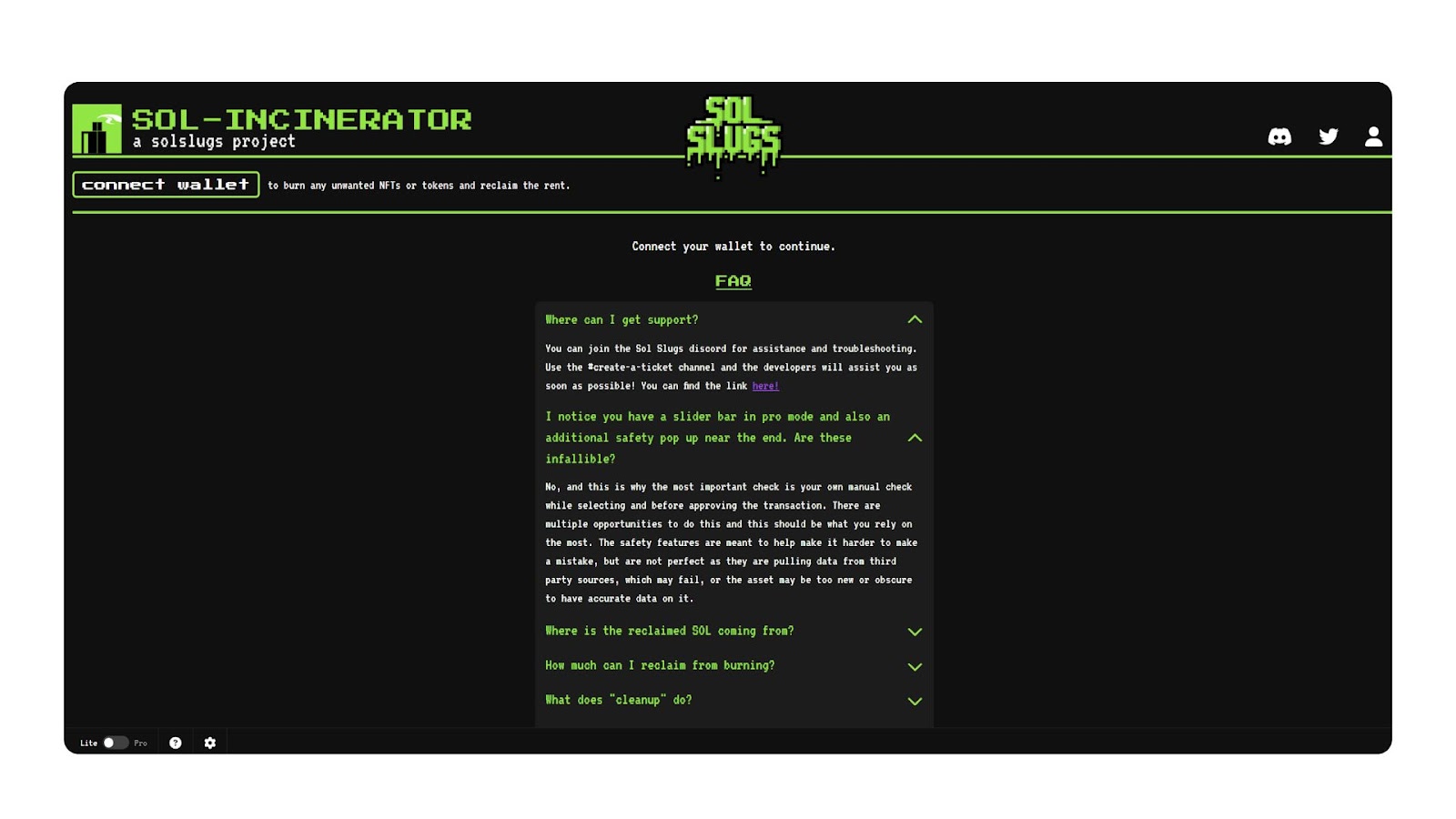
Sol Incinerator Features:
- Batch burning capabilities
- Real-time burn tracking
- Integration with popular wallets (Secure wallet setup guide)
- Burntrash.fun - Fun, game-like experience
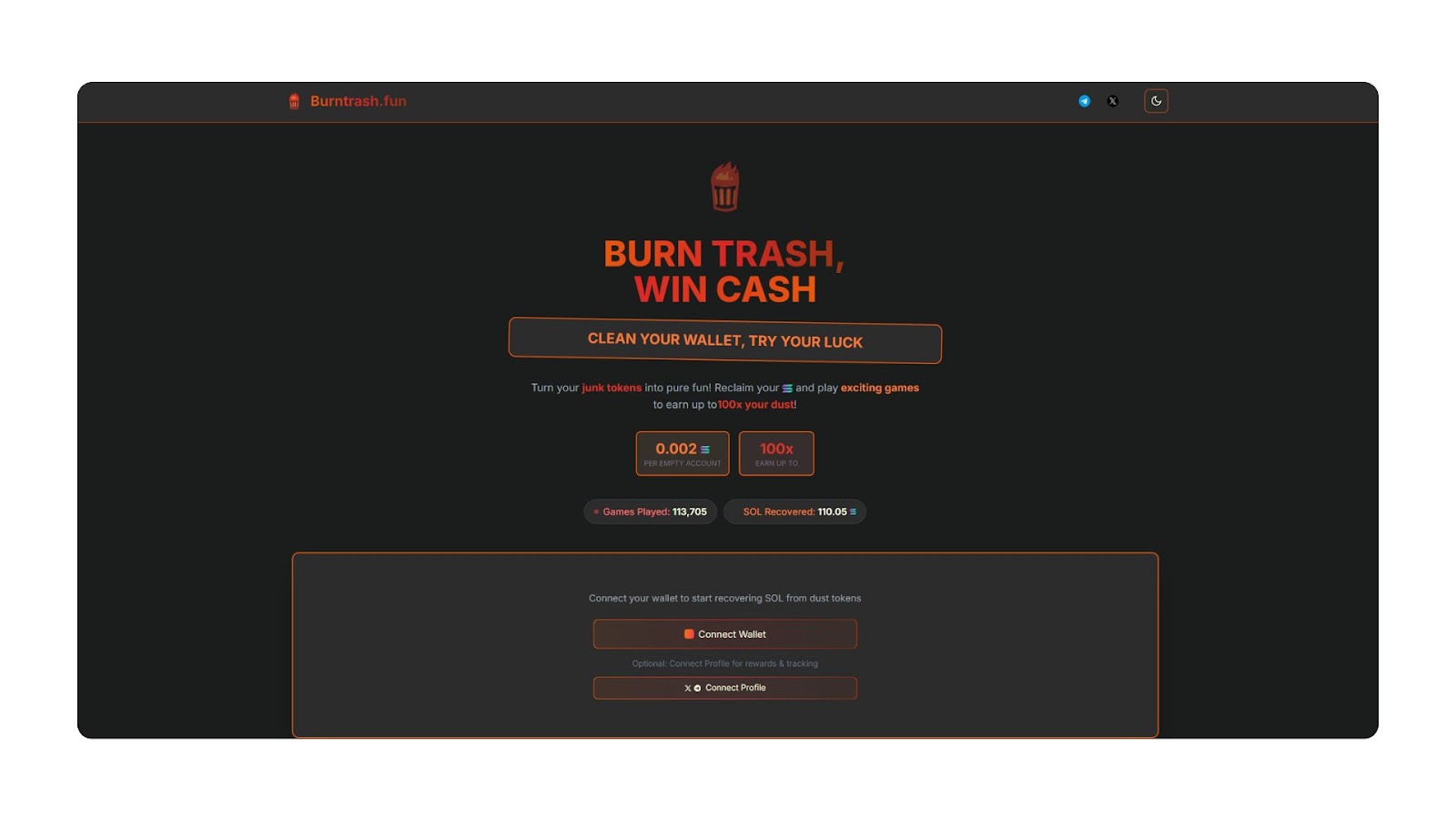
- SolTokenBurner.com - More detailed analytics
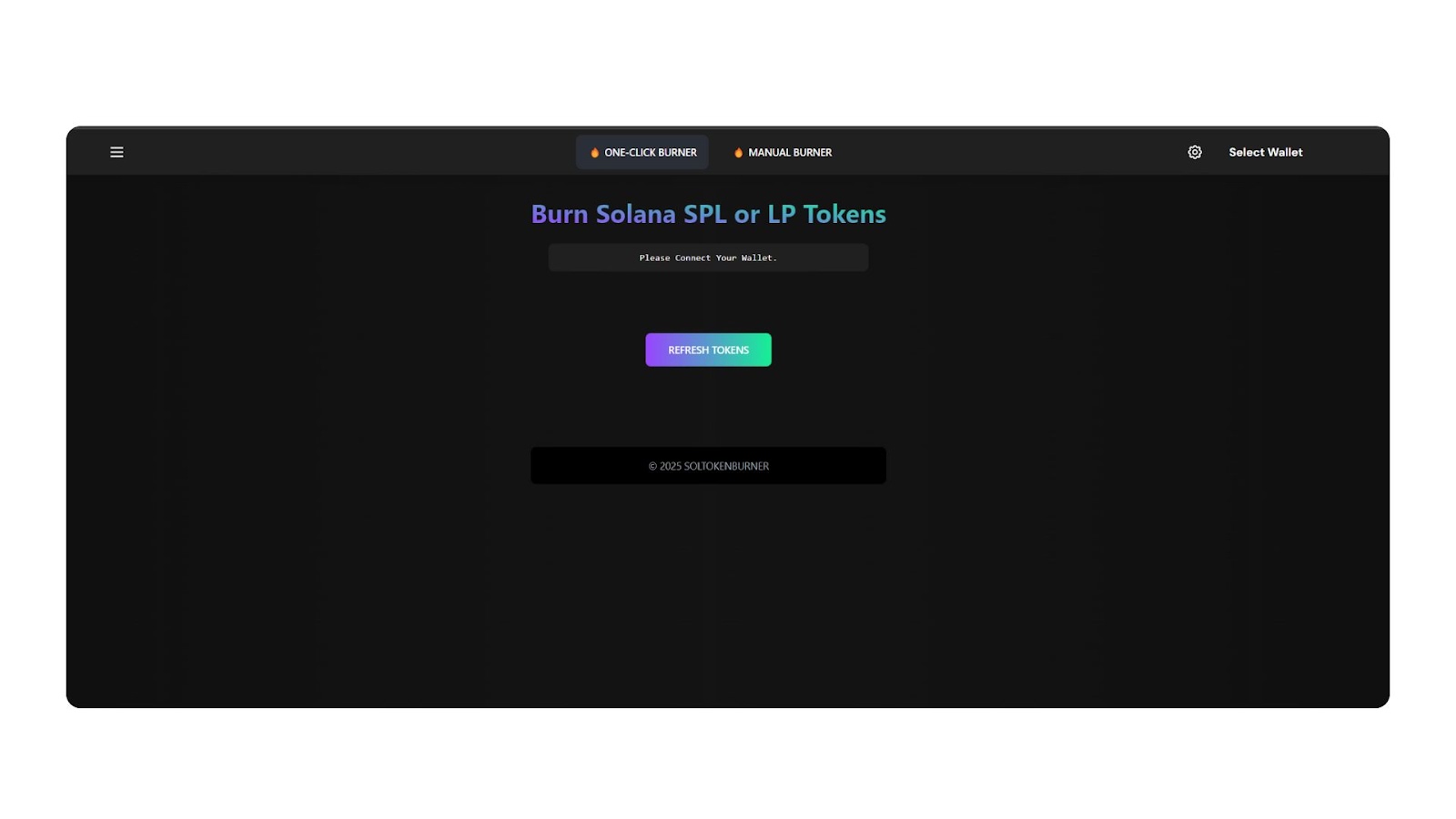
What you get:
- Easy point-and-click burning
- Can burn many tokens at once
- Often includes tracking and statistics
- No need to remember addresses or use commands
Things to consider:
- Some charge small fees
- You need to trust the website
- Always verify the website is legitimate before using
Real-World Implementation Examples
BONK Token - Community-Driven Burning
BONK (Bonk) demonstrates successful large-scale token burning on Solana:
BURNmas Campaign Results:
- Tokens Burned: 1.69 trillion BONK tokens
- Dollar Value: $54 million at time of burning
- Market Response: 25% price increase within 24 hours
- Community Impact: Increased holder engagement and project visibility
Implementation Method: BONK uses community governance to decide burning schedules, with tokens sent to the incinerator address for maximum transparency and community verification.
Solana Protocol - Automated Fee Burning
Solana itself implements systematic burning through its fee structure:
Mechanism:
- 50% of all transaction fees automatically burned
- 50% distributed to validators as rewards
- Creates consistent deflationary pressure
Impact Statistics:
- Daily Burns: ~872 SOL per day (variable based on network activity)
- Total Burned: Over 11 million SOL since network launch
- Current Supply: ~519.9 million SOL (86.5% of maximum supply)
Economic Impact and Tokenomics
Supply Reduction Mechanics
Token burning affects cryptocurrency economics through several mechanisms:
Immediate Supply Shock:
- Reduction in circulating tokens
- Increased scarcity perception
- Potential price appreciation pressure
Long-term Economic Effects:
- Modified inflation/deflation rates
- Changed token velocity dynamics
- Altered staking/holding incentives
Calculating Burn Impact
Percentage Impact Formula:
- Burn Impact = (Tokens Burned / Total Supply) × 100
Market Cap Adjustment:
- New Market Cap = Current Price × (Total Supply - Burned Tokens)
Case Study Analysis
Successful Burning Programs:
- BNB (Binance): Quarterly burns totaling billions in value
- ETH (Ethereum): EIP-1559 base fee burning creating deflationary periods
- BONK (Solana): Community-driven burns generating viral marketing
Key Success Factors:
- Transparency - Clear communication about burning schedules and amounts
- Community Involvement - Stakeholder participation in burning decisions
- Economic Rationale - Logical connection between burning and project value
- Technical Execution - Reliable, verifiable burning mechanisms
Tools and Platforms for Token Burning
Professional-Grade Solutions
QuickNode Integration:
- Comprehensive burning tutorials with full code examples
- Production-ready implementations
- Error handling and edge case management
Solana Developer Cookbook:
- Official documentation and code samples
- Best practices for different token types
- Security considerations and audit guidelines
Conclusion
Solana's approach to token burning represents a significant evolution from traditional blockchain methods, offering superior transparency, efficiency, and technical sophistication. While the ecosystem provides multiple burning options—from the user-friendly incinerator address to professional-grade SPL Token Program integration—the native burn mechanism stands out for its mathematical certainty and cost efficiency.
Understanding these different approaches enables projects and individuals to choose the most appropriate burning strategy for their specific needs. Whether implementing systematic deflationary tokenomics like BONK's community burns or managing individual token portfolios, Solana's burning infrastructure provides the tools necessary for effective token supply management.
The continued development of Token-2022 extensions and growing institutional adoption suggest that token burning will become increasingly sophisticated and integrated into Solana's broader DeFi ecosystem. Projects and users who master these burning mechanisms early will be well-positioned to leverage the economic and marketing benefits of strategic token supply reduction.
For developers and projects considering token burning implementation, the combination of technical documentation, community tools, and real-world case studies provides a comprehensive foundation for successful burning programs that create genuine value for token holders and project sustainability.
Learn more about Backpack
Exchange | Wallet | Twitter | Discord
Disclaimer: This content is presented to you on an “as is” basis for general information and educational purposes only, without representation or warranty of any kind. It should not be construed as financial, legal or other professional advice, nor is it intended to recommend the purchase of any specific product or service. You should seek your own advice from appropriate professional advisors. Where the article is contributed by a third party contributor, please note that those views expressed belong to the third party contributor, and do not necessarily reflect those of Backpack. Please read our full disclaimer for further details. Digital asset prices can be volatile. The value of your investment may go down or up and you may not get back the amount invested. You are solely responsible for your investment decisions and Backpack is not liable for any losses you may incur. This material should not be construed as financial, legal or other professional advice.

